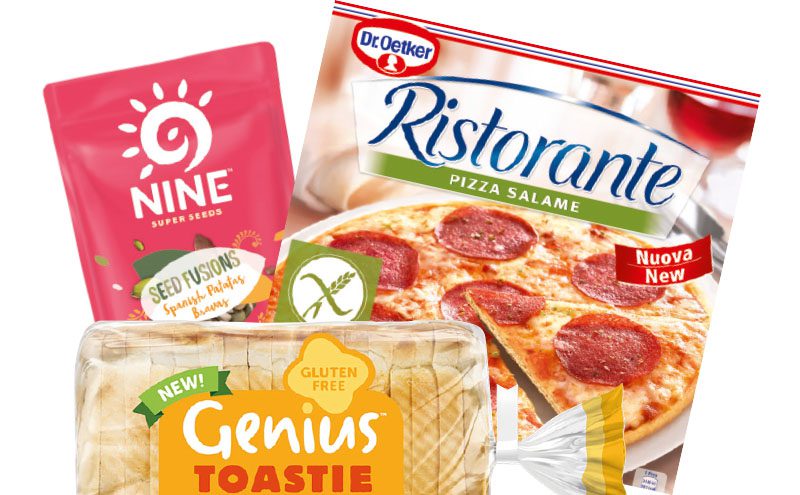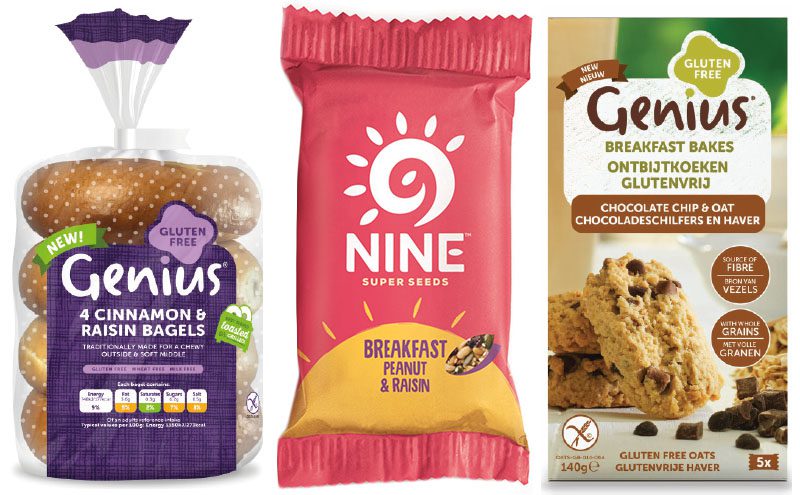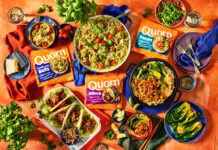Setting up your store to meet demand
IT’S not so long ago that hardly a person in the street could tell you what free-from food was, but the times have definitely changed with data firm Nielsen reporting sales of free-from foods rose by 16% in 2016.

To help get to grips with this emerging category, a number of firms specialising in a range of free-from produce have weighed in with their assessment of where the category is at present and what retailers can do to push it on further in their stores.
Dave Shaw, commercial director for gluten-free brand Genius, was bullish about the free-from category’s gains over the last few years.
“Recent times have seen a major boom in the free-from category, as an increasing number of shoppers are turning to a gluten-free or gluten-light diet as a positive lifestyle choice,” he said.
If there is space available, retailers should have a designated free-from area which will attract those with food intolerances into a store.
Marina Love, marketing director at Natural Balance Foods, the firm behind Nakd bars, described the free-from market as rapidly evolving, with perceptions changing among customers.
“It’s no longer so much about what products don’t contain, such as typical allergens like gluten and lactose or artificial additives, but instead it’s about what they do contain: natural, unprocessed ingredients like nuts and fruits and healthy proteins that taste amazing.
“This much wider use of the term free-from means that more consumers are making it a lifestyle choice as they discover the health benefits of natural ‘wholefoods’,” she said.
The development of a more positive approach to free from was also highlighted by Clare Heathcote of Dr. Oetker, which now produces a range of gluten-free frozen pizzas.
Heathcote suggested the trend for avoiding certain ingredients for lifestyle reasons is built on a consumer desire to improve their own wellbeing – an attitude that’s being adopted by a not insignificant segment of the population.
“This extends to the trend for consumers wanting to know in detail what’s in their food and it’s estimated that 13% of the UK population now say they avoid gluten,” she said.
And although demand appears to be on the uptick, Heathcote added that merchandising still plays an important role in generating sales.
“If free-from goods are displayed in a general section, such as gluten-free pizzas displayed alongside wider frozen pizza varieties – they may not be visible to consumers that don’t frequently shop the general pizza category.
“Merchandising free-from products together with other products that can be easily cross-shopped within the free-from range will help to encourage dual purchases,” she said.
Free-from manufacturers tended to agree that a designated section for such produce can pay dividends, with Lauren Godfrey, brand manager for dairy and gluten-free spread range Pure, echoing Heathcote’s call for a free-from section.
“If there is space available, retailers should have a designated free-from area which will attract those with food intolerances into a store.
“This will help shoppers to find items quicker and it will build their trust that the shop provides products they can also enjoy,” she said.
Allison Deluca, category and shopper marketing manager at Dairy Crest, the firm behind dairy free spread Vitalite, also touted the introduction of a dedicated free-from section as ideal, and suggested dual siting as a solution.
“The ideal scenario to ensure shoppers can locate their preferred products, whether buying due to an intolerance/lifestyle choice or simply because the products meets their needs for taste, value and convenience, would be to dual site dairy-free spreads within the main BSM fixture and in a separate, dedicated chilled free-from fixture.

“Creating such a fixture to range dairy-free products (such as lacto-free cheese, milk alternatives, DF yoghurts and spreads) together, allows retailers both to offer their customers a quick one stop shop solution and to drive up basket spend through cross-shops,” she said.
Having a dedicated free-from section is a starter for ten but it’s not the whole game, as Roger Harrop of gluten-free brand Schar noted merchandising within the section should still be treated with the same care as anywhere else in store.
“Retailers should also ensure that the free from area is merchandised logically with clear signposting and adjacencies that clearly consider customer purchase behaviour,” he said.
The advantages of having a well merchandised free-from section aren’t limited to making the range easy for customers to navigate either, but can also serve to help consumers better understand the category, according to Anna Beheshti, head of mainstream marketing.
“Research shows a lot of consumers do not have a good understanding of which products are gluten-free, and therefore, if space allows, then a free-from bay will be beneficial to shoppers.
“However, where there may be space constraints then there should be clear signage to aid shoppers,” she said.
Beheshti added that foods carrying free-from labelling are becoming increasingly popular with customers as they appeal to a broader spectrum of consumers than those with allergies and intolerances, due to the perceived health benefits of such products.
Research shows a lot of consumers do not have a good understanding of which products are gluten free.
“Foods carrying free-from labelling are becoming increasingly popular with consumers, no longer appealing solely to those with allergies and intolerances, due to the perceived health benefits for the individual, such as weight loss,” she said.
As important as laying out a free-from display is, it’s not worth much if the products in place aren’t matching up to customer demand.
In a category as fast evolving as free from, it’s key for retailers to keep on top of new product developments and Gary Coggin, channel controller at 9Brand Foods, the firm behind 9Nine Super Seed Bars, reckons the category must continue to change and adapt to the market if it is to continue climbing.
“Innovation is the key to the success of the free-from industry; manufacturers are making foods more exciting and more in-line with mainstream offerings to continue to drive growth.
“Free-from foods will need to continue to develop more mainstream products that also offer that added health benefit such as ‘chia seeds’ and almonds which are both popular trends,” he said.


















